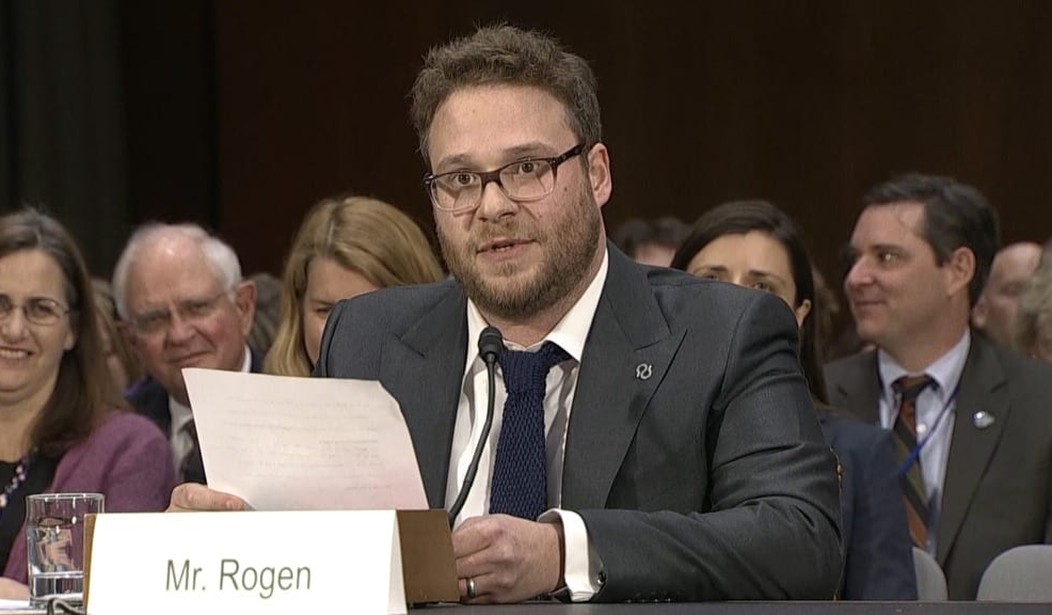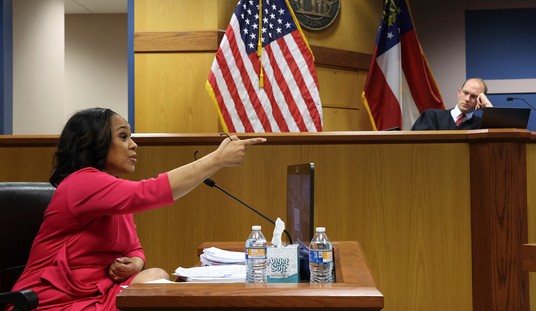WASHINGTON – A Senate panel heard testimony from several experts Wednesday about the economic impact of Alzheimer’s disease and the need to increase funding for research on how to combat the fatal and incurable ailment.
A Senate Appropriations subcommittee questioned leaders from the National Institute on Aging (NIA) and National Institutes of Health (NIH) and other witnesses, including actor and activist Seth Rogen, who testified about his family’s experience with Alzheimer’s and the importance of raising awareness about the disease.
“Americans whisper the word Alzheimer’s because their government whispers the word Alzheimer’s. And although a whisper is better than the silence that the Alzheimer’s community has been facing for decades, it’s still not enough,” Rogen told the Senate Appropriations Subcommittee on Labor, Health and Human Services, Education, and Related Agencies. “It needs to be yelled and screamed to the point that it finally gets the attention and the funding it deserves and needs, if for no other reason than to get some peace and quiet.”
Rogen and his wife, Lauren Miller, became active in the Alzheimer’s community after Miller’s mother was diagnosed with the debilitating disease at the age of 55. Miller’s grandparents also died of the disease. Together, they created “Hilarity for Charity,” an advocacy group focused on educating young people about Alzheimer’s and raising money for research on the disease.
Rogen said he hopes this education will change the stigma associated with the disease.
“There seems to be almost zero acknowledgment of it in the world of these young people…it seems to be something that people think only happens kind of naturally when people enter their 90s,” Rogen said. “I don’t think people understand that it is not their grandparents being affected, it’s their parents being affected, and soon enough it is them being affected.”
Rogen later expressed frustration on Twitter over the low lawmaker attendance for his testimony, not uncommon for a subcommittee hearing on a busy congressional day. “Not sure why only two senators were at the hearing. Very symbolic of how the Government views Alzheimer’s. Seems to be a low priority,” he tweeted.
Although Alzheimer’s is the sixth-leading cause of death in the United States, it is not as commonly discussed or as well-funded as other diseases, several experts testified.
Alzheimer’s is a progressive, irreversible brain disease that slowly wipes out memory and thinking skills and, eventually, the ability to carry out simple daily tasks. As many as five million people in the U.S. suffer from the disease, which is the most common type of dementia. Roughly 15 percent of the population 71 years of age had dementia in 2010.
According to an NIH-supported study, the costs to the U.S. healthcare system for caring for people with Alzheimer’s disease were between $159 billion and $215 billion in 2010. In comparison, health costs for heart disease and cancer were estimated at $102 billion and $77 billion for the same year, respectively.
Former Kansas Rep. Dennis Moore (D), who was diagnosed with Alzheimer’s shortly after retiring from Congress, returned to Capitol Hill to urge his old colleagues to invest in finding a cure for the disease.
“Not only does Alzheimer’s steal our memories, independence and eventually our ability to function, it demands increasing amounts of care,” Moore said. “Beyond the exhaustion and stress, there is the financial burden. Alzheimer’s is creating an enormous strain on the healthcare system, families and the federal budget.”
Moore shared with the subcommittee his struggle with the onset of the disease and what he does on a daily basis to keep symptoms at bay.
“I had become concerned when I noticed I was having some difficulty remembering random events and difficulty managing our household finances,” Moore said. “Since then, I have learned coping skills but still recognize the issue I have with my short-term memory loss.”
 Sen. Jerry Moran (R-Kansas) praised Moore’s desire to help others struggling with Alzheimer’s, while dealing with the challenges of the disease himself.
Sen. Jerry Moran (R-Kansas) praised Moore’s desire to help others struggling with Alzheimer’s, while dealing with the challenges of the disease himself.
“The way that you’re living your life gives others courage and hope,” Moran said.
For every $27 Medicare and Medicaid spends caring for individuals with Alzheimer’s, the federal government only spends one dollar on Alzheimer’s research, Moran said.
“Now is the time that as a nation that we fully commit to defeating one of the biggest threats to the health of Americans and the financial well being of our country,” he said. “In 1962, President Kennedy called the nation to action to reach the Moon by the end of that decade. We need to commit ourselves to the goal of advancing Alzheimer’s research with the same ambition and urgency.”
The Alzheimer’s Association estimates that the U.S. is currently spending more than $200 billion a year on care for people with Alzheimer’s. Those costs are projected to soar to $1.3 trillion by 2050.
In 2009, there were almost 30 million adults, 65 and older, in the U.S. – making up 13 percent of the entire population. That number will more than double to 72 million by 2040. This means Alzheimer’s disease rates will also increase, along with its associated costs, as it primarily affects people after age 60.
NIH Director Dr. Francis Collins said substantial strides have been made in the understanding of the basic mechanisms of Alzheimer’s, which has led to entirely new research for studying the disease and managing it.
Until recently, Alzheimer’s could only be diagnosed until someone had died by examining the brain tissue for the classic signs of the disease. But now, Collins said, signs of Alzheimer’s can be detected inside living brains thanks to recent advances in imaging technology.
“Until a couple of years ago, we focused primarily on trying to treat people with unmistakable symptoms of advanced Alzheimer’s…. The results, I’m sorry to say, have been almost entirely discouraging,” Collins said. “But today, we’re focused on earlier interventions so many of our newest clinical trials are actually looking at pre-symptomatic patients who are at high risk but have not yet shown any symptoms.”
Collins said the research community is struggling and only one in six researchers receive funding for their projects.
“We are not, at the moment, limited by ideas. We are not limited by scientific opportunities. We are not limited by talent,” Collins said. “We are, unfortunately, limited by resources to be able to move this enterprise forward at the pace that it could take.”
Last month, President Obama signed into law a funding bill that included an unprecedented $122 million in additional money for Alzheimer’s research and care programs. The Obama administration adopted in 2012 a national strategy to combat Alzheimer’s disease and find a cure for the disease or slow its progression by 2025.









Join the conversation as a VIP Member